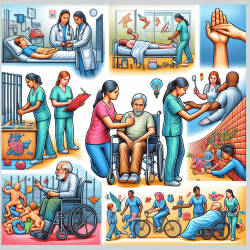Introduction
Language development in individuals with autism often includes unconventional spoken language features such as echolalia, neologisms, and idiosyncratic phrases. Understanding these features is crucial for practitioners working with autistic individuals to tailor effective interventions. The research article "Conventions for unconventional language: Revisiting a framework for spoken language features in autism" offers an updated framework for these unconventional language features, providing valuable insights for practitioners.
Key Findings from the Research
The research highlights the diversity of unconventional language features in autism, categorizing them into non-generative forms (e.g., echolalia), generative forms (e.g., neologisms), and transitional forms (e.g., mitigated echolalia). Understanding these categories can help practitioners identify and interpret the communicative intent behind these language features.
Practical Implications for Practitioners
Practitioners can use this framework to enhance their assessment and intervention strategies. Here are some practical steps:
- Assessment: Utilize the framework to identify specific unconventional language features in clients. This can inform the development of personalized intervention plans.
- Intervention: Tailor interventions to leverage the communicative potential of unconventional language. For example, echolalia can be used as a stepping stone for developing more generative language skills.
- Further Research: Encourage ongoing research and professional development to stay updated on the latest findings in autism language development.
Encouraging Further Research
While the framework provides a robust foundation, there is a need for further research to explore the developmental trajectories of unconventional language features and their long-term implications. Practitioners are encouraged to engage with the research community to contribute to this growing body of knowledge.
Conclusion
Understanding unconventional language in autism is essential for effective practice. By applying the insights from the research, practitioners can improve their skills and provide more targeted support to individuals on the autism spectrum. To read the original research paper, please follow this link: Conventions for unconventional language: Revisiting a framework for spoken language features in autism.










